Planning your own trip? Prepare for your trip
Use Rough Guides' trusted partners for great rates
Book your individual trip, stress-free with local travel experts
Plan your tailor-made trip with a local expert
Book securely with money-back guarantee
Travel stress-free with local assistance and 24/7 support
For the last two decades, the popular refrain on visiting Cuba has been “Go now before it changes forever”, which has seen tourism on this Caribbean island rocket.
Cuba is an island that regularly lurches forward, then crunches into reverse. And it is also a place renowned for its stagnation over the last six decades, since the 1959 Revolution stopped the clocks and turned everything upside down. When you travel to Cuba you’ll be struck by vintage radios, refrigerators and lamps, and swinging neon signs hanging over storefronts. There are antique pharmacies and traditional barbers, and iconic classic American cars everywhere. But this is no retro trend, it’s make-do-and-mend, frozen-in-carbonite Cuba.
However, the pace of modernization on the island is increasing exponentially. New swish hotels are springing up and first-class, family-run boutique hotels are flourishing. And house-based restaurants – paladars – are slowly putting Cuban cuisine on the culinary map.
There have been other transformations. In recent years this communist stronghold has lost its titanic patriarch, Fidel Castro and celebrated the first US presidential visit in 80 years. It has sworn in a new president of its own, Miguel Diaz-Canel, the first person outside the Castro family to lead the country since 1959.
But the uniqueness of Cuba is unwavering. Roadside billboards still proclaim “Socialism or death”, world-class ballerinas and baseball players earn the same meagre state salary as the ordinary workers. On your Cuba travels you can meet Cuban artists in their own front-room galleries and learn how to dance salsa in home-based studios. You can take a city tour in a 1956 Chevrolet and learn how to kite surf, rock climb, play the conga and ride a horse. And the island's breathtaking beaches, unspoiled seas and forest-covered mountains haven’t gone anywhere.
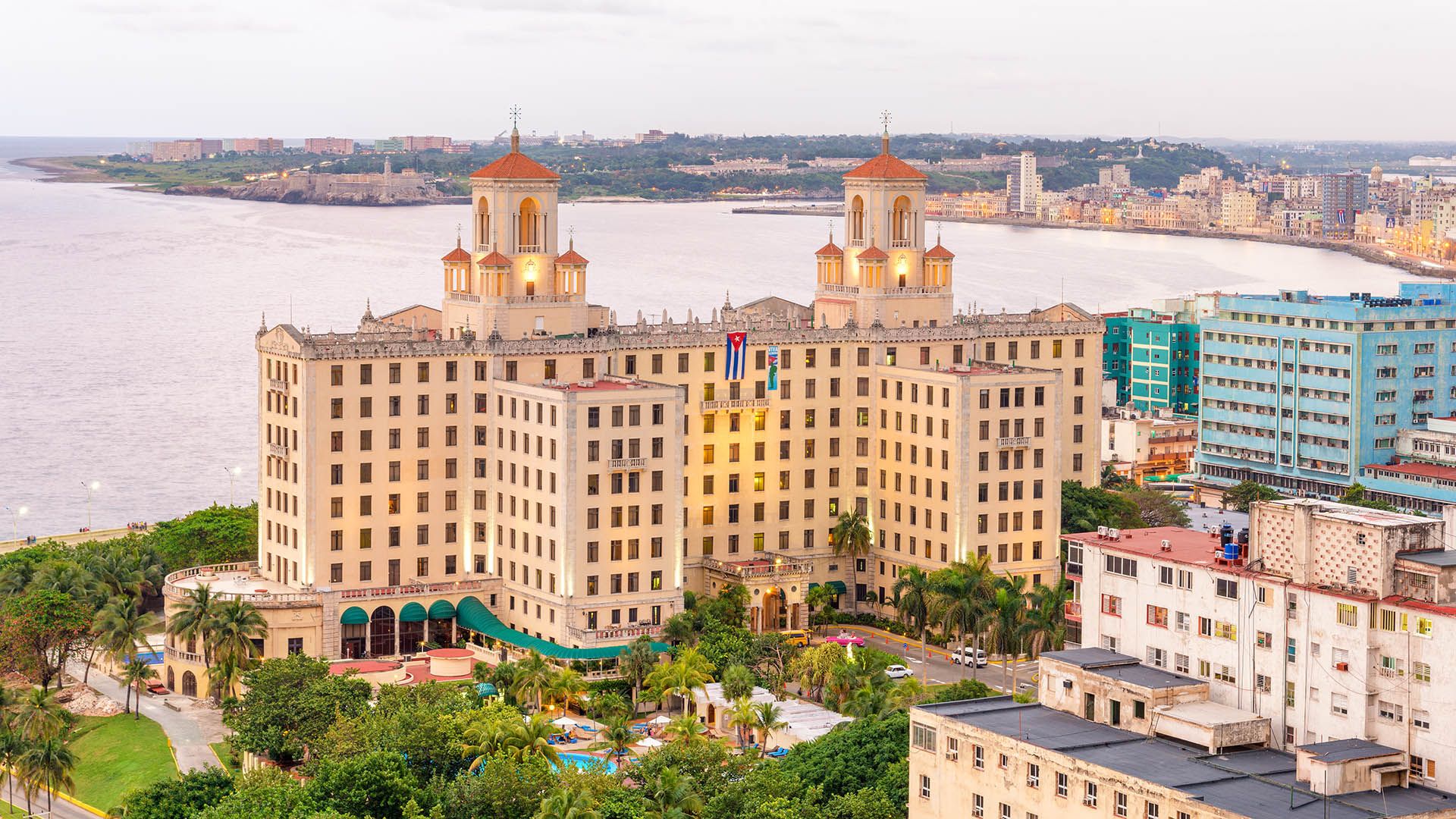
Aerial view of the Hotel Nacional in Havana © Kamira/Shutterstock
The best time to travel to Cuba is typically between December and May. However, you can almost always except sunny warm weather due to the islands fairly close location to the equator. Even if you travel to Cuba during the rainy season, between May and October, you’re unlikely to have a waterlogged holiday, as the rains never last very long. September and October are peak hurricane season.
Festival-wise, the best celebrations in Cuba take place from July 25th to 27th where the locals take to the streets to celebrate the success of the Cuban Revolution. Expect rallies, speeches and dances. The Cubans celebrate these days as the happiest days in Cuban history.
Read more about festivals and when to go to Cuba.
If you travel to Cuba, a visit to its dynamic capital, Havana, has to feature on your itinerary. Habana Vieja is at the heart of this unique city – a collision of the old and new, with architectural splendours from as far back as the sixteenth century, alongside buzzing new bars and restaurants, boutique hotels and casas particulares.
With its giant, Jurassic-era hills, Viñales valley in the province of Pinar del Río has a lost-world quality, while the Sierra del Rosario range holds the remote and lovely eco-resort of Las Terrazas. There are any number of tobacco plantations you can visit, the most famous being Alejandro Robaina. For fantastic scuba diving head west to the secluded María La Gorda on the Península de Guanahacabibes.
There is no shortage of beach resorts in Cuba but for the full holiday package head to Varadero in Matanzas province. A seemingly endless beach, all-inclusive hotels and watersports are just a couple of hours drive east from Havana. The wild and unspoiled Península de Zapata on the south side of the province holds an abundance of wildlife and great diving opportunities. Other popular day-trip destinations include the awesome Cuevas de Bellamar (Bellamar caves) and the lush landscape of the Yumurí valley.
Santa Clara is worth a stopover on your trip to Cuba, this large and bustling city probably best known for its Che Guevara connections. Easy-going Cienfuegos, with its distinctly French feel, is known as the “Pearl of the South”, and enjoys a lovely bayside setting.
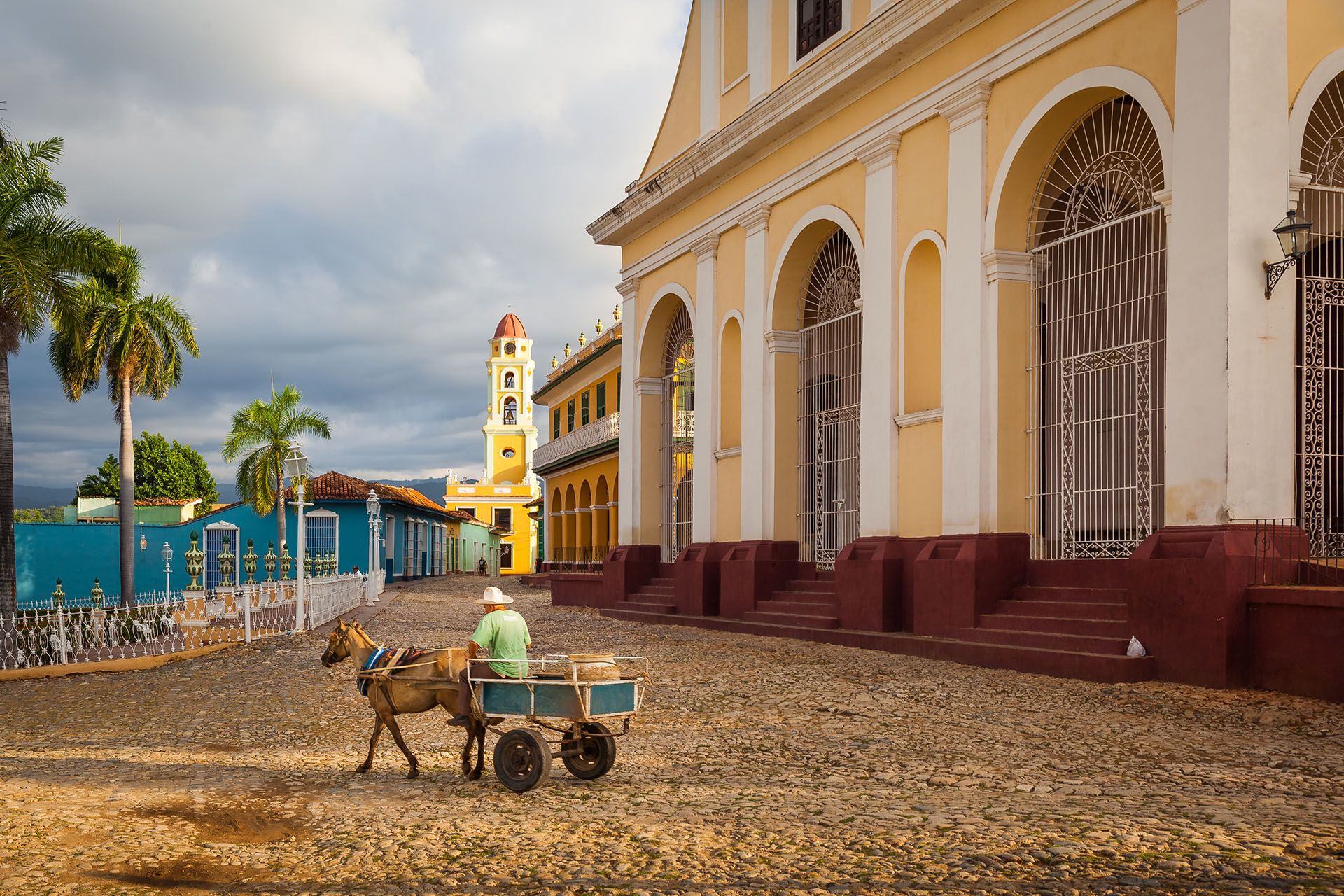
Trinity Church in Plaza Mayor, Trinidad, Cuba © Maurizio De Mattei/Shutterstock
The historic and atmospheric city of Trinidad, with its pastel-coloured colonial architecture and its villagey feel, draws visitors in large numbers. It’s also an ideal base for exploring the Sierra del Escambray, in particular, the Topes de Collantes. Furthermore, you can use it as a jumping off point for the idyllic stretch of coastline on the Península de Ancón and its beaches, in particular, Playa Ancón.
For more soft white sands head for Cayo Coco and the quieter Cayo Guillermo, off the north coast of Ciego de Ávila province. Base yourself in picturesque Morón if the luxury hotels on the cays are beyond your budget. Enjoy the surrounding countryside brimming with palm trees, sugar cane and citrus trees.
Camagüey, one of Cuba’s oldest towns and a UNESCO Heritage site, is crammed with architectural delights and atmospheric cobbled streets, and is particularly vibrant during its June carnival.
A short drive north is the low-key beach resort of Santa Lucía and the wonderfully remote and tranquil beaches of Cayo Sabinal.
The crown jewel of Holguín province in the Northern Oriente is lively and picturesque Playa Guardalavaca, its sugar-like sands popular with Cubans and tourists alike. Playa Esmeralda, Pesquero and Turquesa offer luxury and tranquillity.
Baracoa, a small vibrant coastal town set on Cuba’s southern tip is surrounded by some of the country’s most breathtaking mountains, rainforest and countryside.
If you travel to Cuba you could easily while away your entire holiday in Santiago de Cuba province, southeast of the island. The southern coast road, sandwiched between glistening waters and the blue-green mountains of the Sierra Maestra is a superb drive. And the mountains are home to great trekking country – and various landmarks linked to the revolution.
Energetic and buzzing Santiago offers a laid-back, determinedly Caribbean vibe, enticing visitors with some of the best Cuban music, particularly during its lively annual July carnival.
It’s a three-hour journey by ferry to Isla de la Juventud, off the south coast of Artemisa province. But if you make the effort to get there you’ll appreciate the island’s timeless quality. You can enjoy gentle beaches, leisurely walks and cycle rides, and there are great diving spots.
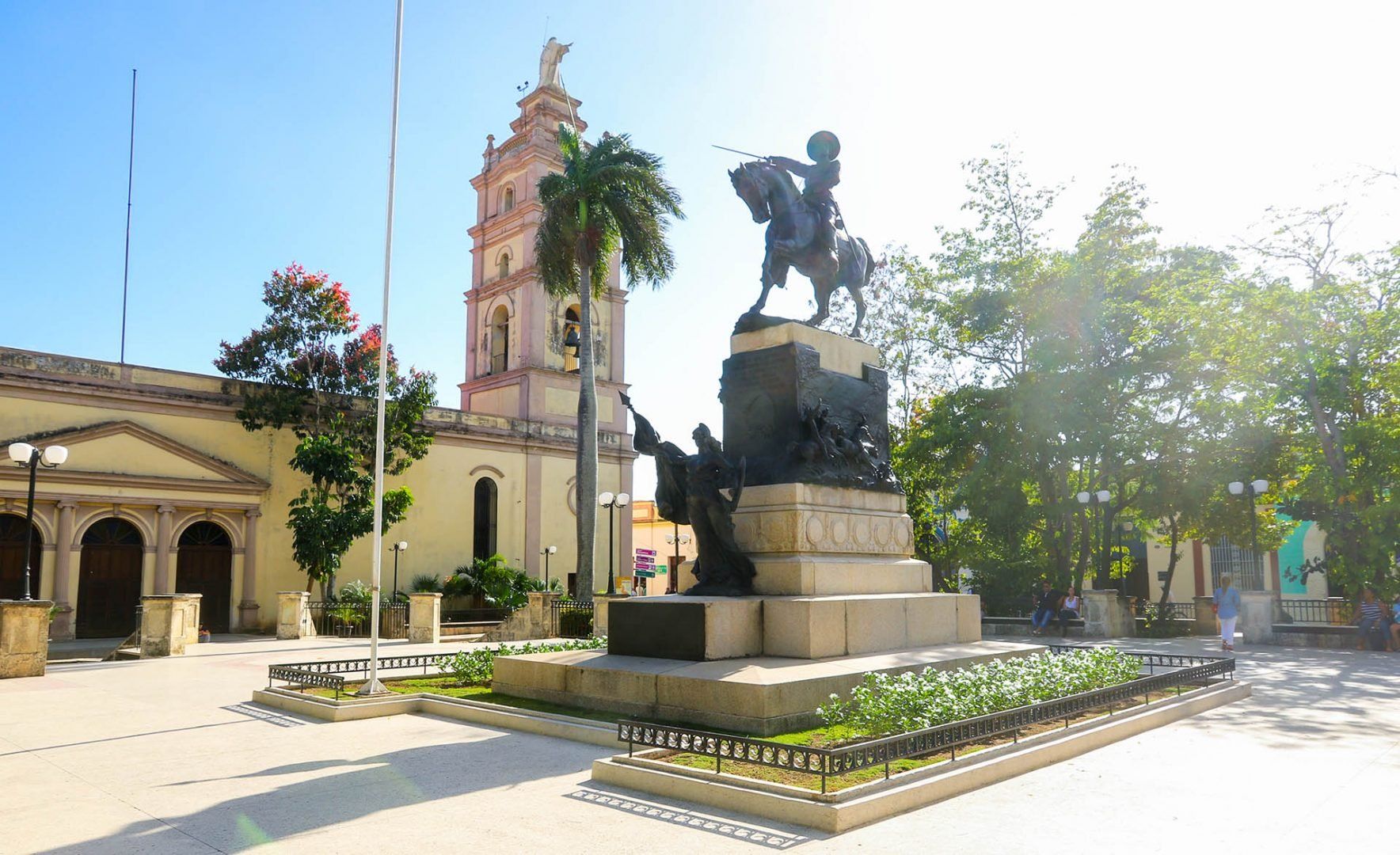
Parque Agramonte in Camagüey © Alexandre G. ROSA/Shutterstock
Getting to Cuba is straightforward. Several airlines fly direct from Europe, although there aren’t many from the UK. It can prove cheaper to fly indirect to Cuba from the UK via other European cities. There are no direct flights from Ireland, nor from Australia. You can now fly direct from the US, while Canada has long had the most flights to Cuba. Most flights land at Havana’s José Martí airport, although you can go direct to some regional airports.
If you’re travelling to Cuba from the US and you book via a specialist tour operator they’ll likely be licenced to take groups of US citizens. This removes the hassle of organising a licence yourself.
Get more information on how to fly to Cuba.
Travel in Cuba is mostly done by bus, especially as not that many Cubans own cars. There are two national bus networks. Víazul operates for foreign passport holders and CUC-paying Cubans, and the Empresa Omnibus Nacionales network, for national-peso-paying Cubans.
Taxis, especially shared ones, are an easy and fairly cheap way to travel in Cuba. Car hire is also a convenient option. Train travel is slow but a good way to see the country and cycling tours are gaining in popularity. For long distances it could be worth flying between destinations.
Read more about travelling around Cuba: the pitfalls of car hire and driving, getting around on buses, taxi options (Communal taxis, or taxis colectivos, long-distance taxis, tourist taxis, private taxis, bicitaxis and mototaxis), cycling and train travel.
Cuban travel is characterized by heat, music, dance and culture. It’s not possible to see all the island has to offer on one trip, so here are some of the very best places to visit in Cuba.
This buzzing small town on Cuba’s southeastern tip is a must on the travellers’ circuit. Soak up its old-time atmosphere by wandering the streets of pastel-coloured colonial houses, and watch the world go by in Parque Central. Locals gather here to play chess and dominos. Baracoa is surrounded by some of the country’s most breathtaking mountains, rainforest and countryside, rich with banana and coconut trees. You can reach the flat summit of El Yunque, the flat-topped mountain in the Sagua Baracoa range in a couple of hours without breaking too much of a sweat. Your efforts will be rewarded with astounding views.
This archipelago on the north coast of Cuba offers soft, creamy sands, lapped by startlingly clear waters, gorgeous lagoons and pink flamingos, and dense mangroves. Playa Pilar beach on Cayo Guillermo is the top draw for beach lovers, while divers and snorkelers head for Cayo Coco’s northeast coast. It holds one of the longest coral reefs in the world, where angelfish, butterfly fish and surgeon provide a riot of colour. If underwater worlds aren’t your bag, explore Cayo Coco’s lush wooded interior, especially delightful for bird lovers. It’s a haven for hummingbirds and pelicans, and the marshes of the south provide sanctuary for herons and white ibis.
It feels as though time has stood still in this UNESCO world heritage site. Habana Vieja comprises cobbled plazas, crumbling colonial mansions, leafy courtyards, sixteenth-century forts and perfectly restored centuries-old buildings. With hardly any motorized traffic, it’s a delight to absorb the buzzing atmosphere simply by strolling. Plaza Vieja is the most animated and alluring square in Old Havana, alive with the hum of visitors in the cafés and restaurants. Pass the time and people-watch over a coffee or rum cocktail.
Giant humpbacked limestone hills (mogote) looming from the flat floor of lush Viñales valley are an arresting sight. This is particularly so early mornings when the valley can be shrouded in ethereal mist. Traditional tobacco farmers with their ox-driven ploughs add to the sense of time at a standstill. Enjoy the friendly vibe in the low-key village of Viñales, visit the nearby caves, perhaps explore the region on horseback.
Trinidad is the most visited town on the island and with good reason, for this UNESCO world heritage site oozes character. Wandering the cobbled streets of the old town, with its assortment of pastel-coloured, red-roofed houses and colonial mansions, is a delight. The beautiful Plaza Mayor is the focus of the old town with all the major museums close by. Scale the winding wooden staircases in the towers at the Museo de la Lucha Contra Bandidos and the Museo de Historia Municipal. You’ll get the best views of Trinidad, framed by coastline and mountains. Don’t leave Trinidad without experiencing the Casa de la Música. Drawing the largest crowds in town, this standout live music venue is Trinidad’s busiest, most animated spot. You’ll get the best big-band salsa and guaranteed dancing.
Trekking in the Sierra Maestra, Cuba’s highest mountain range will, literally and figuratively, take your breath away. Steep ascents make for some strenuous hikes, while the scenery of lush and untamed vegetation, wild seas, and far off sugar-cane fields, is spellbinding. You can only trek in the Sierra Maestra with a guide, but it’s well worth doing. The trail through the cloudforest of the Parque Nacional Turquino to the island’s highest point, Pico Turquino, is especially stunning.
The Sierra del Escambray holds some of the most stunning scenery in Cuba, with the Gran Parque Natural Topes de Collantes offering up wonderful hiking territory and horse-riding trails. Steep forested slopes of pine and eucalyptus trees give way to beautiful waterfalls and pools and awesome views. For access to a wider network of trails go with a guide, as access is restricted for independent travellers.
The journey to these remote, beach-blessed islets, the northern cays, along a 50km-long causeway skimming above clear waters, is reason enough to visit. But the star attraction is the paradisiacal, creamy soft sands of Playa Perla Blanca. Situated at the far eastern end of Cayo Santa María, this pristine beach feels remote and unspoiled, in part due to the absence of any facilities.
The waters around María La Gorda on the Península de Guanahacabibes offer some of the best diving in Cuba and the quiet town makes an ideal base. The protection of the bay means the waters are clear and calm, ideal for experienced divers and first-timers alike. The fifty or so dive sites offer the chance to witness a huge variety of underwater wildlife. This includes as the fierce-looking barracuda, lobsters, moray eels and whale sharks, among others.
Cuban cigars are generally known to be the best in the world – and the best of the best are produced in the fertile Vuelta Abajo region in the province of Pinar del Rio. While there are numerous tobacco plantations, the most famous is the Alejandro Robaina. Producing top-quality tobacco since 1845, it’s is the only plantation in Cuba to farm for its own brand, the Vegas Robaina, named after the founder’s grandson. Although Alejandro Robaina died in 2010 at the ripe old age of 91, the plantation is still thriving. You can go on an intimate and down-to-earth tour that vividly brings to life the journey of the plantation’s tobacco from seeding to cigar.
Get more information on things not to miss in Cuba.

View of Baracoa © Autumn Sky Photography/Shutterstock
Transportation in Cuba is somewhat unorganised and defies logic, so we suggest you plan your trip beforehand. We’ve created a few itineraries to inspire you and help you get the most out of your visit.
For ideas on what to do in Havana over two to three days, take a look at our ‘Havana grand tour’ itinerary. If you’re interested in Cuba’s great outdoors and you have a couple of weeks to explore, take a look at our ‘Mountains and mogotes’ itinerary. And if you fancy getting around Cuba on two wheels our ‘Havana to Trinidad by bike’ itinerary will surely appeal.
We’ve created this sample itinerary combining city sights, culture and paradisiacal beaches – ideal for a first-time visit to Cuba.
Days 1 – 3: Havana
Havana, the 500-year-old vibrant capital made up of vintage cars, colourful colonial-style buildings, cigars and salsa. Head to charming Habana Vieja (Old Havana), to eat churros and explore the streets of crumbling buildings, new and interesting bars and restaurants. Embark on a classic car tour, where you will be driven to all the hot spots in Havana in a tasteful vintage car. Be sure to check out the Plaza de la Revolucion (Revolution Square) and the infamous Havana Cathedral. The Sinistro cigar factory is quite the icon in Havana. It provides tours in which you can roll your own cigars – perfect for a handmade souvenir.
Days 3 – 7: Playa Jibacoa and Varadero
About 60 km from Havana lies Cuba's best-kept secret, Playa Jibacoa. This picturesque beach is postcard worthy for its soft white sands and clear emerald waters. The beauty of Playa Jibacoa is that it is secluded and rarely known to tourists. Relax, swim and dive the sunken shipwrecks for a few days and enjoy the Caribbean heat. A little further away is the more well known beach spot, Varadero. Varadero offers the same gorgeous beaches but with more tourists and hotel chains.
Check out our other Cuba itineraries.
You must have a ten-year passport, valid for two months after leaving Cuba, a return, or onward flight booked, and health insurance. If you don’t have proof of insurance you may have to buy a Cuban health insurance policy. Companies in the US do not cover Cuba. You will also need to purchase a tourist card (visa for Cuba). This is available online, at UK airports, and from some airlines and tour operators. Tourist cards are valid for 30 days for UK, US and Australasian citizens and 90 days for Canadians. They can be renewed for another 30 days once you’re in Cuba. Additionally, US citizens need proof of a licence to travel.
Read more about entry requirements: Cuba travel restrictions and visas for travel to Cuba.
Children are made welcome pretty much everywhere, although there’s little in the way of entertainment aimed specifically at children. There’s also not much in the way of facilities, such as high chairs, car seats, baby-changing facilities, etc. First-aid items may be more expensive and not as readily available, and the same goes for nappies, baby wipes, etc. The only milk available is UHT.
See more on travelling with children in Cuba.
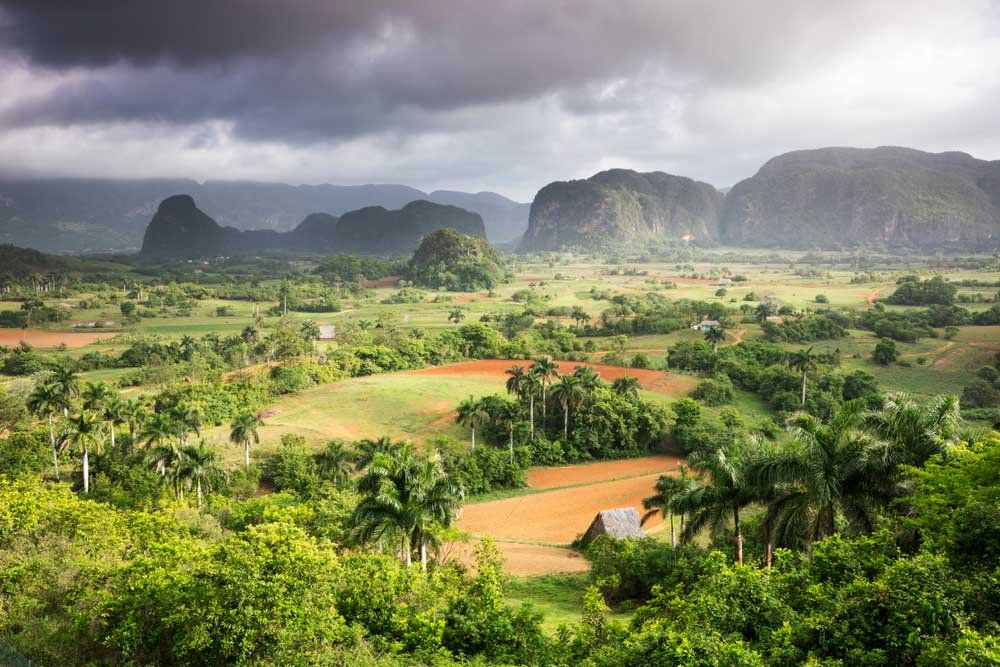
Morning view to Vinales valley, Cuba © Zaruba Ondrej/Shutterstock
Accommodation options generally fall within two camps: hotels and casas particulares – literally “private houses”, which often provide the best places to stay in Cuba. Hotels divide into those run by the Cuban state, or internationally owned chains.
Read more about accommodation in Cuba – the different types of hotels and hostales, casas particulares, campismos (similar to camping).
You’ll find no particular health risks if you travel to Cuba, although you shouldn’t drink tap water because of possible parasites. No vaccinations are legally required, although it’s advisable to get inoculations for hepatitis A, cholera, tetanus and to a lesser extent rabies and typhoid. Take a first aid kit with you, as availability is limited.
Read more about health matters in Cuba, such as food and water, mosquitos and ticks, sun exposure, hospitals, clinics and pharmacies, etc.
Crime against foreign visitors is on the increase, particularly in Havana, which also involves violent crime. In general, however, most crime involving tourists is pickpocketing and bag snatching, especially in Habana Vieja and Centro Habana.
Women travelling alone in Cuba are generally safe, more so than in many Western cities, particularly at night. And women are treated with courtesy and respect. The problem women are most likely to encounter if they travel to Cuba is unwanted attention. However, it’s usually conducted with charm, so it tends to be more irritating than threatening.
Read more about safety in Cuba: women travelling alone, precautions against crime, etc.
When you visit Cuba you must have travel insurance that covers medical expenses. If you are found to be without insurance at immigration you will have to take out an insurance policy with Asistur, the tourist-assistance agency. American citizens should go to Asistur for insurance, as US insurance providers don’t provide cover for Cuba.
Get more information on travel insurance for Cuba and information on purchasing travel insurance.
Visitors to Cuba are not usually enticed by its cuisine. You won’t go hungry, as portions tend to be huge, and produce is grown locally, but you’re unlikely to be excited by what’s on your plate, as food tends to be on the bland side. That said, the growth of private enterprise in Cuba has seen the emergence of new and interesting restaurants (paladars), especially in Havana.
Meat tends to feature heavily on menus throughout Cuba, often roasted or prepared in a stew and accompanied by rice and beans, cassava or sweet potato. And you’ll find wonderfully fresh seafood in coastal areas. Street food is usually freshly made and very tasty, and provides a cheap lunch or snack. Common snack include tamales (steamed cornmeal, peppers and onions, wrapped in corn husks) and corn fritters.
Convertible-peso restaurants usually provide superior quality meals than national-peso establishments (catering mainly for Cubans). They also tend to be cleaner and nicer, generally. However, you can sometimes get very cheap and decent food in national-peso restaurants. Paladars used to operate out of people’s homes, but Cuba is seeing a surge in these privately owned restaurants in interesting settings, such as old colonial buildings and mansions.
Bear in mind that most establishments only take cash, and where credit cards are accepted, you can come up against problems. So it’s better to avoid card payment altogether.
Read more on food in Cuba: state restaurants and paladars, popular dishes, street food, fruit, sweets and snacks, etc.
Rum, the national tipple is cheap and readily available, particularly Havana Club, while Santiago de Cuba is the choice of many connoisseurs. Rum is also the star turn in several classic Cuban cocktails, such as the Cuba libre, daiquiri and mojito. Lager (cerveza), such as Cristal, is plentiful.
Soft drinks, including Coke and Pepsi are sold in convertible-peso shops, alongside Cuba’s own alternative brands of fizzy pop. Other drinks in Cuba include granizado (a slush drink), guarapo (sweet frothy drink made from pressed sugar cane), Prú (speciality in Eastern Cuba and resembles spiced ginger beer) and fresh lemonade.
Unsurprisingly, coffee is a very popular drink among Cubans. It is served in all restaurants and bars and at national-peso coffee stands in town centres.
Read more on drink in Cuba.

Varadero beach © Kako Escalona/Shutterstock
From travel safety to visa requirements, discover the best tips for visiting Cuba
Cuba is not a particularly cheap country to visit. If you’re on a tight budget, national-peso goods and services, such as fresh-food markets and street vendors, will save you some money, but it’s not always an option. You’ll have to pay for accommodation in convertible pesos, and most likely when travelling long-distance on buses, taxis, etc., although long-distance taxis can be cost-effective if you share them with other passengers.
Cuba has two units of currency: the Cuban peso, or national peso (CUP) and the Cuban convertible peso (CUC), which can only be bought or sold in Cuba itself. Both are represented by the dollar sign ($), which can be confusing, although sometimes prices are specified as CUC, CUP, or MN (national pesos). Scottish, Northern Irish and Australian banknotes and coins cannot be exchanged in Cuba.
Always carry some money in cash, in low denominations, as many shops and restaurants, bus and train stations, simply won’t have enough change. The slightest tear in any banknote means it is likely to be refused.
Although upmarket hotels, restaurants and touristy shops generally accept credit cards, the majority of places still operate using cash only. Cards issued by a US bank or credit card company aren’t accepted at all; neither are Maestro or Cirrus cards. ATMs are thin on the ground and many only accept Cuban cards.
The Banco Financiero Internacional and the Banco de Crédito y Comercio are the banks most used to dealing with foreign currency exchange; they have branches in all major cities.
Read more about money: costs, banks, currency exchange, and what to do in the event of financial difficulty in Cuba.
The state closely controls and censors all media in Cuba. The main national newspaper is Granma, the official mouthpiece of the Cuban Communist Party; there are few international newspapers available. US-based On Cuba magazine and website, is one of the best resources for up-to-date impartial news and views on Cuba and particularly Cuban-US relations and cultural projects. Havana Live website is a good resource for of-the-moment news stories about the capital and beyond, and listing and tourist information.
Read more on the media in Cuba.
Cuba has some of the best festivals in Latin America, from the unmissable July carnival in Santiago de Cuba, to the renowned Havana Film Festival (Festival Internacional del Nuevo Cine Latinoamericano), as well as numerous smaller festivals celebrating music, dance and other arts. When you travel to Cuba it’s worth timing your visit to coincide with one of these.
Cuba is blessed with an abundance of outstanding scuba-diving spots, particularly around the clearer waters of the south coast, such as María La Gorda in southwestern Pinar del Río. And diving is good year round, although visibility may be hampered during the hurricane season.
Other outdoor sports and activities to try include kitesurfing, hiking (although access is restricted so you’ll probably need to go with a guide) and fishing – Cuba being one of the best fishing destinations in the Caribbean.
Spectator sports include baseball, basketball and soccer, and you can catch a game in the national leagues for next to nothing.
Find out more about sports and outdoor activities in Cuba.
Cigars, rum, coffee, music and arts and crafts are the really worthwhile purchases here. It’s also possible to pick up some wonderful pieces of vintage homeware, furniture and memorabilia.
Find out more about shopping in Cuba.
Get more travel tips for Cuba: such as opening hours, public holidays, working and studying in Cuba, LGBT travellers, travelling with a disability, tipping etiquette – and more.
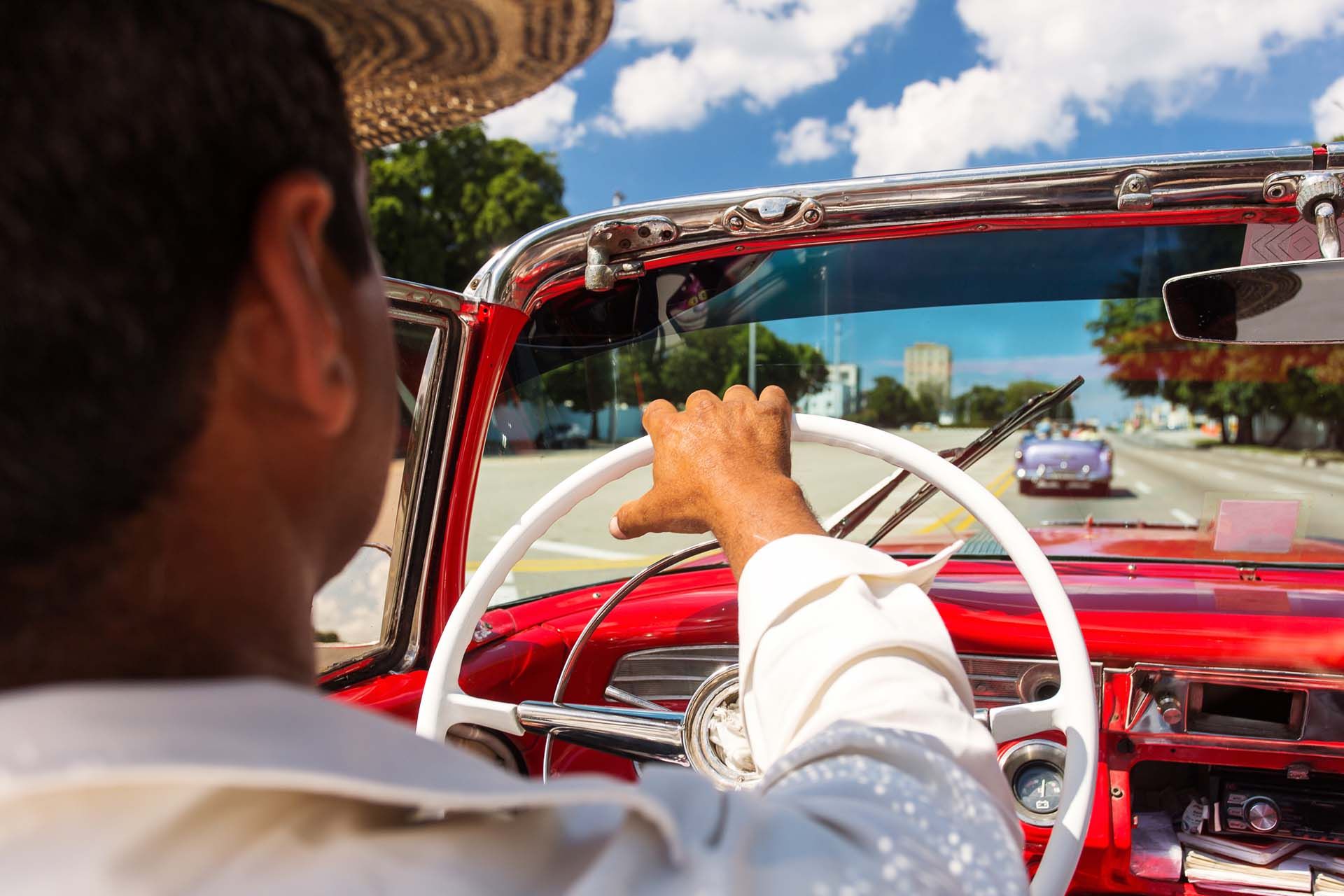
© Shutterstock
Perhaps the most clichéd image of Cuba is of a classic American car rolling past a crumbling colonial building, and you don’t have to spend long in the country to see why this image has become so ubiquitous. There are said to be around 60,000 vintage cars in Cuba, most of them still on the road and almost all of them imported from the factories of Detroit during the 1940s and 1950s, when the US was Cuba’s most significant trade partner. After President Kennedy cut off all trade with Cuba via the 1962 economic embargo that exists to this day, car owners were compelled to keep their Buicks, Oldsmobiles, Chevrolets and Fords running. Unable to source replacement parts, proud owners have over the years become the most ingenious on the planet, culling pieces from Eastern Bloc Ladas, household appliances and even old tanks to keep their cars alive.
When Carlos V issued a royal order in 1539 formalizing rum production, it secured Cuban rum’s place on the map. Today Cuba produces some of the world’s most respected brands of rum, silky smooth modern varieties that have little in common with the harsh drink enjoyed by sixteenth-century pirates and renegades. Quality ranges from the most basic white rum widely used for mixing in cocktails (famously the mojito, the cuba libre and the daiquiri), to various dark rums aged in oak casks for different lengths of time, from around three years to as many as thirty, the latter of which sell for around $50CUC a bottle – and are best enjoyed neat or over a chunk of ice. Though Havana Club is the best known of all Cuba’s rums, browsing the shelves of the convertible peso shops will reveal tempting but lesser-known varieties such as Cubay’s pleasantly sweet dark rum and Ron Palma Mulata, a good white rum that is slightly cheaper than its Havana Club equivalent. Among the finest Cuban rums are Havana Club Gran Reserva and Santiago de Cuba Extra Añejo – reputed to be the favourite tipple of Fidel Castro himself.
Top image: Cuban flag in a doorway in Trinidad, Cuba © Sabino Parente/Shutterstock
Use Rough Guides' trusted partners for great rates
written by
Rough Guides Editors
updated 11.06.2024